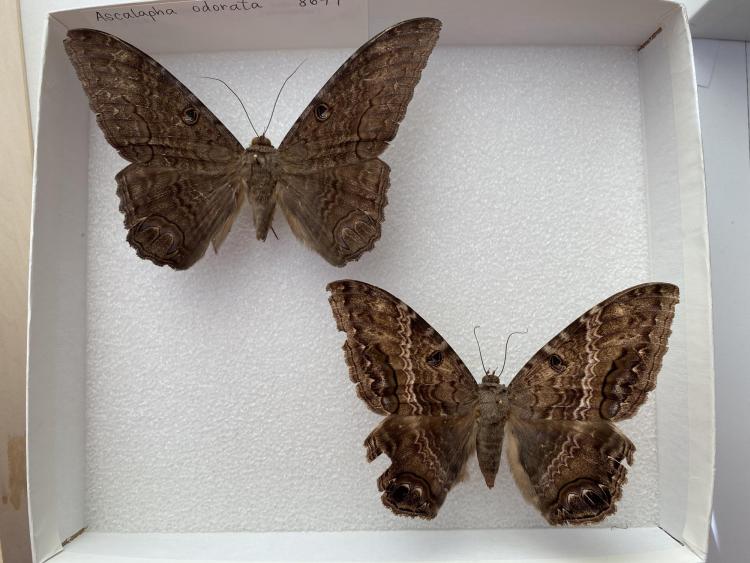The CU Museum is closed. We will be reopening soon.
During this time, collection visits will be available by appointment and other special access requests will be considered on a case-by-case basis.
Please email cumuseum@colorado.edu for more information.
Black Witch Moth

The onset of the tropical rainy season initiates some populations begin migrating northward by night2. Adult moths only live for several weeks, so the tremendous journey is carried out by successive generations between June and October. A common stopover point is the desert southwest, which is abundant with the witch’s host plants: woody legumes such as Acacia, Cassia, Mesquite and Locust. The Black Witch can migrate over water and has been found on each of the Hawaiian Islands and the Caribbean Islands; they have even been spotted flying over open water near offshore oil rigs in the Gulf of Mexico! Following Hurricane Claudette in 2003, hundreds of Black Witches were found off the coast of Texas where the eye of the storm had been. It is thought that they were absorbed by the storm and deposited on the coast, as they had never been found in such abundance in the area before3.
The large geographic range covered by the Black Witch has led to a rich cultural history. The moth has different meanings for different cultures in its wide range, often indicated by its common name in various local languages. In Mexico the moth is called “mariposa de la muerte” in Spanish and “Micpapalotl” Nahuatl, both meaning the “butterfly of death”. Since Aztec times, it is thought that if the moth enters a home where someone is ill, the ailing person will pass. In the Lower Rio Grande Valley of Southern Texas, there is a similar belief, but the moth must first visit all four corners of the house.
Common name: Black Witch
Scientific name: Ascalapha odorata (Family: Erebidae)
Catalog numbers: UCMC 0043075 (male top left) and UCMC 0043120 (female bottom right)
Label data: Collected in USA: Texas, Jeff Davis County, June 9-10, 1998, J.W. Peacock (RA Watkins, collection)
Holland, W. J. (1903). The Moth Book: A Popular Guide to a Knowledge of the Moths of North America. Doubleday, Page & Co., New York. P. 279.
Quinn, M. (2008, November 3). The Black Witch Moth: Its Natural & Cultural History. Texas Entomology. http://texasento.net/witch.htm
Freeman, B. (2003). A Fallout of Black Witches (Ascalapha odorata) Associated with Hurricane Claudette. News of the Lepidopterists’ Society, 45(3), 1.

